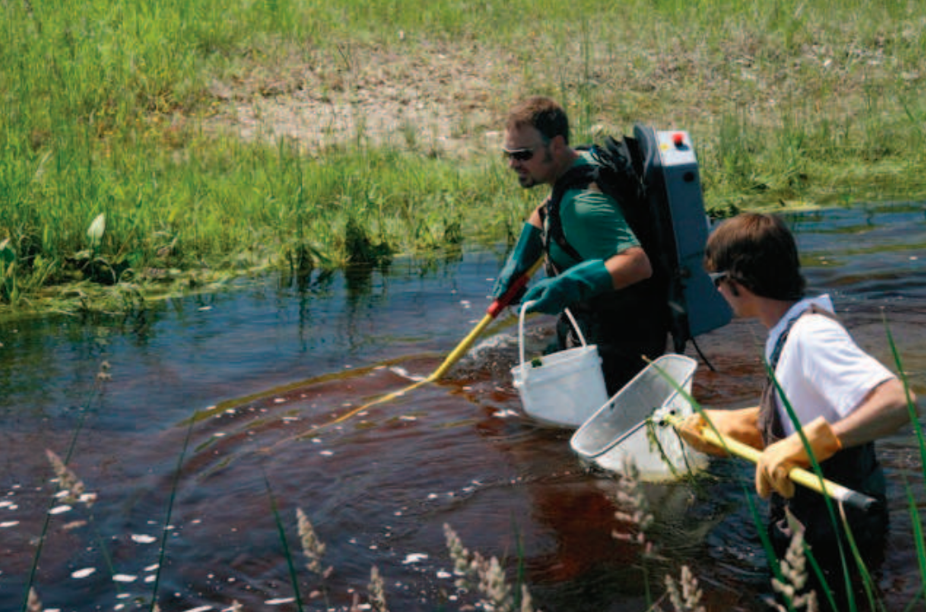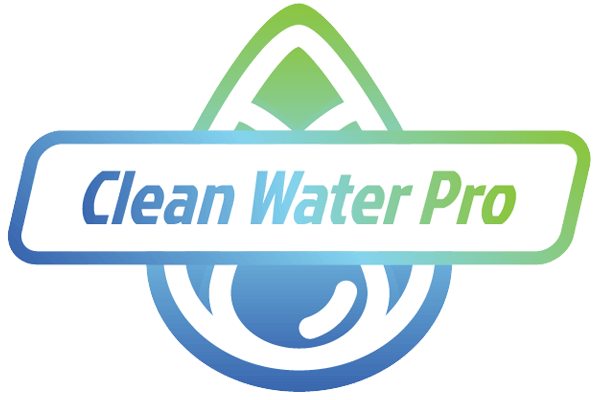What is Electrofishing?

Electrofishing is a fishing technique that captures and monitors fish species by running a low electrical current through the water. When the fish come into contact with the electric current, they are immobilized, and trained professionals can easily capture them. It is an important tool in fisheries research, management, and maintenance programs.
Electrofishing is an efficient and effective way of collecting data on fish populations. It provides a non-destructive way to survey fish populations and their characteristics in shallow bodies of water and deeper depths.
Our Clean Water Pro team are trained professionals certified to operate an electrofishing unit and participate as a crew safely. Our team can use data collected from Electrofishing to determine the fish community’s size, composition, and health. This data also monitors aquatic ecosystems’ health, assesses human activities’ effects on fish populations, and informs resource management decisions.
The most common form of Electrofishing uses a boat with two electrodes connected to an electrical generator. The electricity temporarily stuns and immobilizes the fish to be collected with a dip net or a seine. This technique targets fish from specific areas, making it a great tool for research and monitoring.
Why is Electrofishing Used?
Our team at Clean Water Pro uses Electrofishing for population surveys and assessments, fisheries management, fish removal, and research. It is an efficient and important tool required to manage fish populations. This technique captures important data, such as population status and catch rates. Our team uses it to identify areas of over-exploitation and make decisions to improve the health and productivity of fisheries.
Electrofishing is typically used for research, management, and leisure activities on rivers, streams, and other water bodies. Fisheries biologists, wildlife biologists, environmental agencies, and other fisheries professionals involved in fish management and research will benefit from Electrofishing.
It is a relatively non-invasive population survey technique, allowing researchers to capture large numbers of fish with minimal disturbance quickly. This data is used to understand the structure and function of fish populations, assess human activities’ impacts on fish populations, and help inform management decisions.
After being captured, the fish are quickly released back into the water. The stunning effect of Electrofishing is typically temporary, and fish usually recover quickly, returning to their normal behaviour shortly after release.
Using Electrofishing Responsibly
Although Electrofishing is a beneficial and great technique for harvesting fish, there are some concerns about its possible negative effects. It’s important for agencies to use it responsibly to avoid potential environmental harm. It can startle and displace fish and other aquatic species, interfere with spawning and nesting activities, and increase sedimentation. This can be damaging to aquatic ecosystems if not monitored closely.
Electrofishing can also remove certain fish species, impacting the balance of ecosystems or disrupting the spawning of certain species. Keeping Electrofishing to a minimum is important to preserving the ecosystem’s natural balance. Implementing proper protocols and conservation practices is essential to minimize negative impacts. Best practices include prohibiting spawning or nesting fish and protecting sensitive habitats.
If done correctly, Electrofishing can provide a variety of benefits. It can help control the populations of certain species of fish, allowing for sustainable availability for recreational anglers. This technique provides information about the structure of fish populations, which enables researchers to estimate their abundance in an area.
Rest assured that our team at Clean Water Pro takes all the necessary precautions and protocols. Our team is led by trained professionals certified to operate an electrofishing unit and participate as a crew safely.
Summary
Electrofishing has a minimal effect on the environment. It reduces stress and mortality on the target species and non-target species. Most of the electric pulses used are low intensity, so there is generally no permanent damage to the aquatic environment. Electrofishing is an environmentally friendly way of gathering data on fish populations, as it does not require harmful chemical pollutants, such as those associated with poison or gill nets.
Overall, Electrofishing is an extremely valuable tool for fisheries used by fisheries professionals to collect essential data for managing and conserving fish populations. This method allows researchers to quickly and effectively gather data on fish populations. While this technique potentially affects the environment, following recommended guidelines and conservation practices can minimize these impacts.
Check out our Fishery Lakes page for more information about our Fish Management Services!
